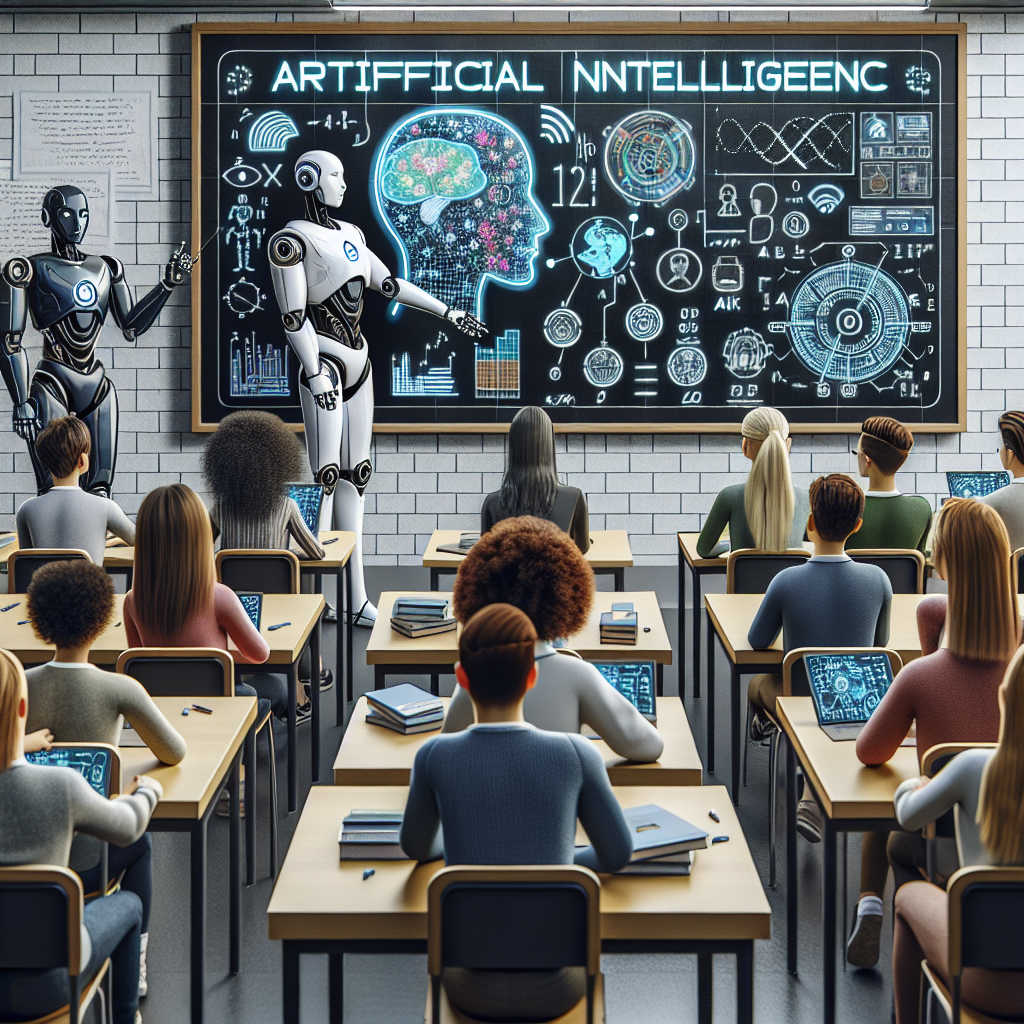In recent years, artificial intelligence (AI) has been increasingly making its way into the field of education, reshaping the way students learn and teachers teach. From personalized learning experiences to automating administrative tasks, AI is revolutionizing the education sector in numerous ways. In this article, we will explore how AI is reshaping teaching and learning, and how it is impacting both students and educators.
Personalized Learning
One of the most significant ways AI is reshaping teaching and learning is through personalized learning experiences. With the help of AI, educators can now create customized learning paths for students based on their individual needs, preferences, and learning styles. This allows students to learn at their own pace, focus on areas where they need the most help, and receive immediate feedback on their progress.
AI-powered adaptive learning platforms analyze students’ performance data to identify areas of strength and weakness, and then provide targeted learning resources to help students improve. This not only enhances student engagement and motivation but also improves learning outcomes.
For example, Carnegie Learning’s MATHia platform uses AI to provide personalized math instruction to students. The platform adapts to each student’s learning style and pace, offering targeted practice exercises and immediate feedback to help students master math concepts.
Automating Administrative Tasks
AI is also reshaping teaching and learning by automating time-consuming administrative tasks. Educators spend a significant amount of time on tasks such as grading assignments, managing student records, and scheduling classes. AI-powered tools can streamline these processes, freeing up teachers to focus on more meaningful tasks like lesson planning and student engagement.
For example, Turnitin’s Feedback Studio uses AI to provide automated feedback on student writing assignments. The tool not only checks for plagiarism but also provides suggestions for improving grammar, style, and clarity.
Similarly, chatbots can be used to answer commonly asked student queries, such as assignment deadlines or exam schedules, reducing the burden on teachers to respond to these inquiries individually.
Enhancing Student Engagement
AI is also reshaping teaching and learning by enhancing student engagement. AI-powered tools can create interactive and immersive learning experiences that capture students’ attention and keep them motivated to learn.
For example, virtual reality (VR) and augmented reality (AR) applications can simulate real-world environments and scenarios, allowing students to explore concepts in a hands-on and interactive way. This can be particularly beneficial for subjects like science, history, and geography, where students can visualize complex concepts and events.
Additionally, AI-powered tutoring systems can provide personalized support to students outside of the classroom, offering additional practice exercises, explanations, and feedback. This can help students reinforce their learning and gain a deeper understanding of the material.
Improving Accessibility
AI is also reshaping teaching and learning by improving accessibility for students with diverse learning needs. AI-powered tools can provide accommodations for students with disabilities, such as text-to-speech technology for students with visual impairments or speech recognition software for students with motor disabilities.
Additionally, AI can help identify and support students who are struggling academically or emotionally. For example, sentiment analysis tools can analyze students’ written responses to identify signs of stress or frustration, allowing educators to intervene and provide support when needed.
Challenges and Concerns
While AI holds great promise for reshaping teaching and learning, there are also challenges and concerns that need to be addressed. One of the primary concerns is the potential for bias in AI algorithms. If AI systems are not properly trained or monitored, they may perpetuate existing biases in education, such as gender or racial stereotypes.
Another concern is the impact of AI on teachers’ roles and job security. As AI automates more administrative tasks and provides personalized learning experiences, some fear that teachers may be replaced by technology. However, proponents of AI argue that technology should be used to enhance teachers’ capabilities, rather than replace them.
Additionally, there are concerns about data privacy and security. AI systems collect and analyze large amounts of student data, raising questions about who has access to this information and how it is used. Educators and policymakers must ensure that student data is protected and used ethically.
FAQs
Q: How can AI benefit students with diverse learning needs?
A: AI-powered tools can provide accommodations for students with disabilities, such as text-to-speech technology for students with visual impairments or speech recognition software for students with motor disabilities. Additionally, AI can help identify and support students who are struggling academically or emotionally.
Q: Will AI replace teachers in the classroom?
A: While AI has the potential to automate administrative tasks and provide personalized learning experiences, it is unlikely to replace teachers entirely. Instead, AI should be used to enhance teachers’ capabilities and support them in providing high-quality education to students.
Q: How can educators ensure that AI is used ethically in education?
A: Educators and policymakers must establish clear guidelines and protocols for the use of AI in education to ensure that student data is protected and used ethically. Additionally, educators should receive training on how to use AI tools effectively and responsibly.
Q: What are some examples of AI-powered tools in education?
A: Some examples of AI-powered tools in education include adaptive learning platforms like Carnegie Learning’s MATHia, automated feedback tools like Turnitin’s Feedback Studio, and virtual reality applications for immersive learning experiences.
In conclusion, AI is reshaping teaching and learning in numerous ways, from personalized learning experiences to automating administrative tasks. While there are challenges and concerns that need to be addressed, the potential benefits of AI in education are significant. By leveraging AI technology responsibly and ethically, educators can enhance student engagement, improve learning outcomes, and create more inclusive and accessible learning environments.

